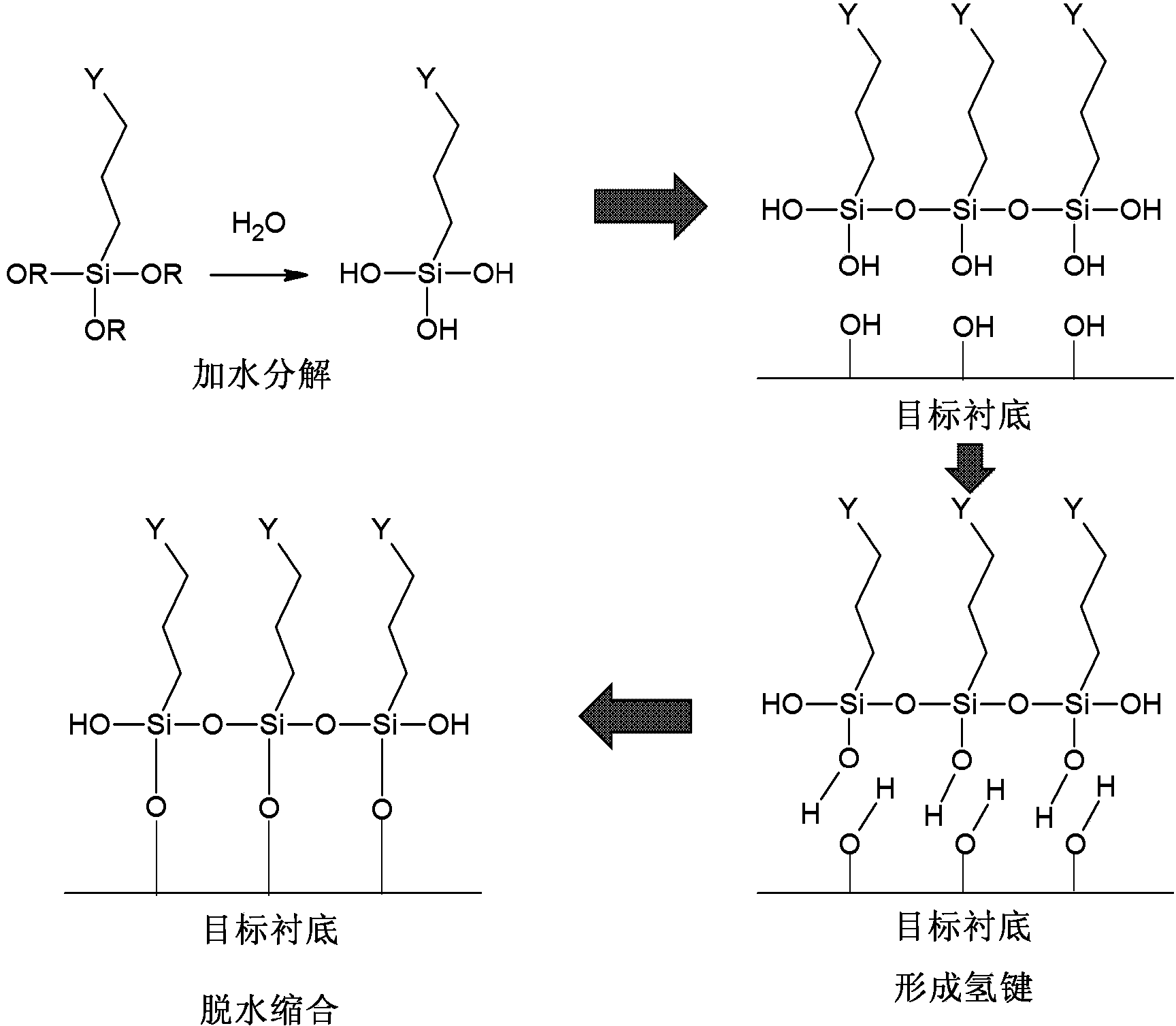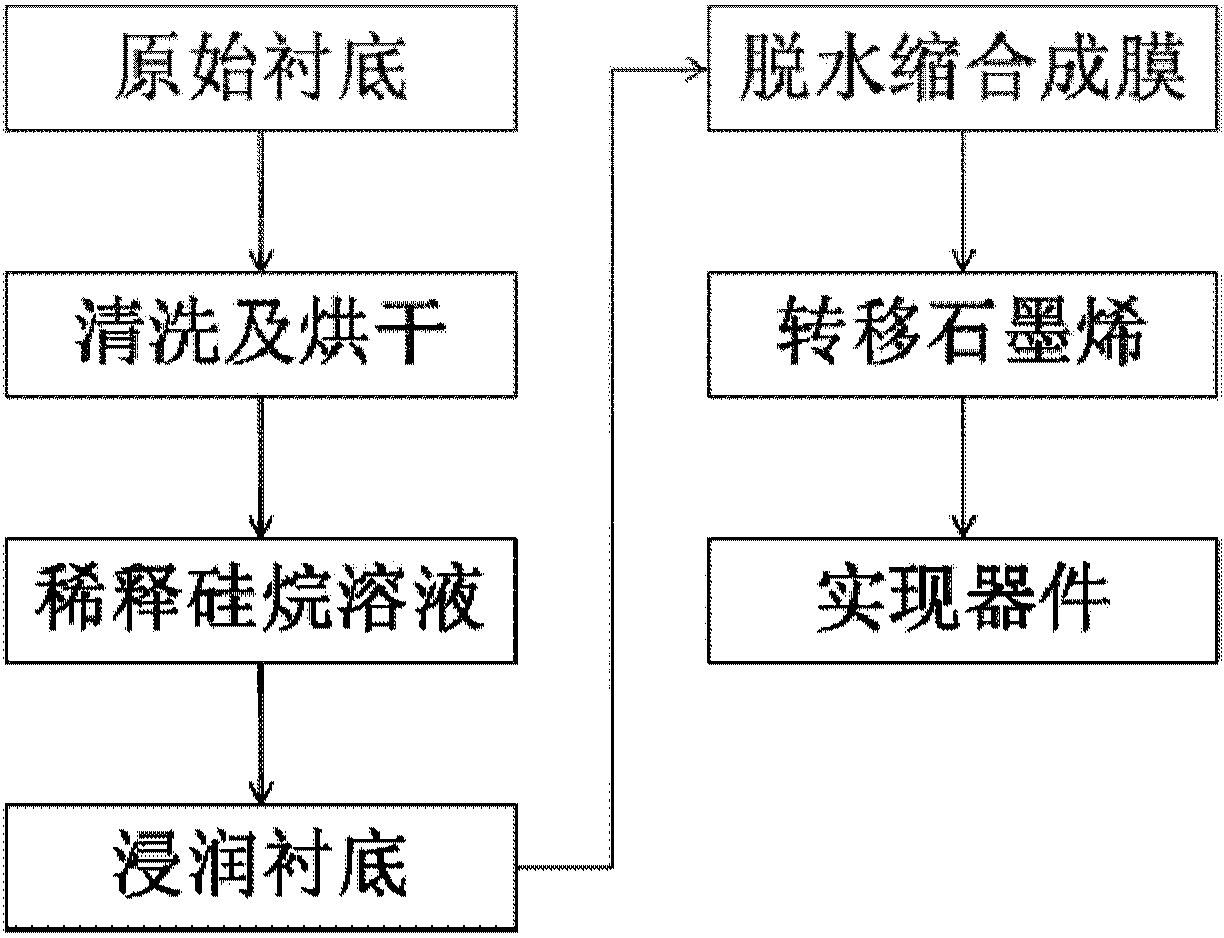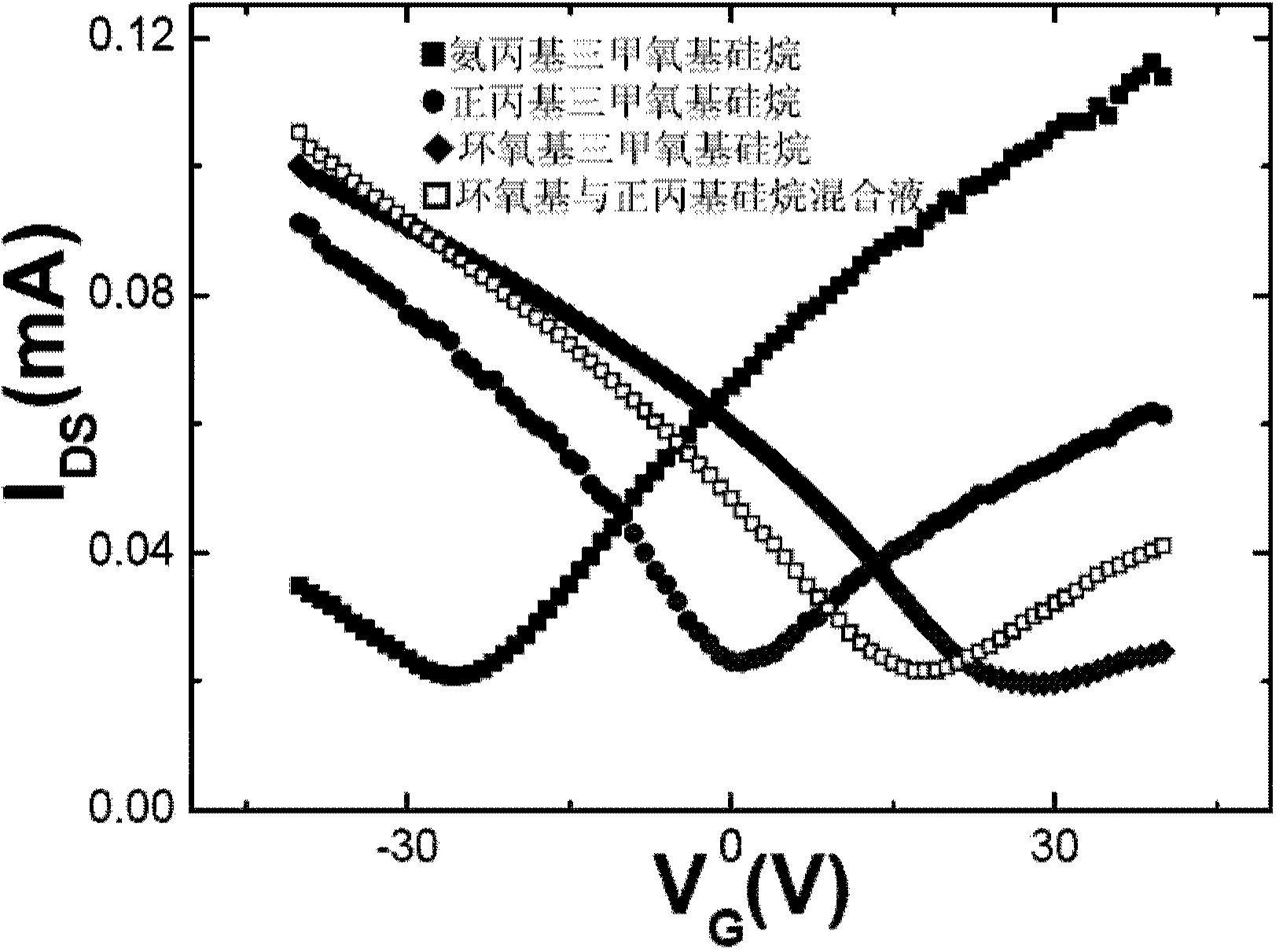Surface treatment method of carrier concentration of adjustable controlled carbon-based semiconductor device
A carrier concentration and surface treatment technology, applied in the field of nanoelectronics, can solve the problems of large structural damage of carbon materials and decreased carrier mobility of materials
- Summary
- Abstract
- Description
- Claims
- Application Information
AI Technical Summary
Problems solved by technology
Method used
Image
Examples
Embodiment 1
[0034] Embodiment 1: use CVD to grow graphene material, on the silicon dioxide / silicon substrate after n-propyltrimethoxysilane is processed film formation, realize graphene field effect transistor.
[0035] figure 2 Use silane coupling agent to carry out the flowchart of surface treatment to substrate for the embodiment of the present invention, comprise the following steps:
[0036] Step 1: After diluting the silane coupling agent with a solvent, immerse the substrate in the diluted solution. Before immersing, the substrate material needs to be cleaned and baked and dried;
[0037] In this embodiment, the silane coupling agent-n-propyltrimethoxysilane dilution is prepared, and n-propyltrimethoxysilane (purchased from China Pharmaceutical Group Chemical Reagent Beijing Co., Ltd.) and absolute ethanol solution are mixed in volume ratio Dilute at 1:20-1:400, shake well after dilution, immerse the substrate in the silane dilution solution for 1-20 minutes; then put the cleaned...
Embodiment 2
[0042] Embodiment 2: use CVD to grow graphene material, on the silicon dioxide / silicon substrate after processing film formation through aminopropyltrimethoxysilane, realize graphene field effect transistor.
[0043] The specific steps are similar to Example 1, but in step 1, the dilute solution is prepared with aminopropyltrimethoxysilane and absolute ethanol at a ratio of 1:20-1:400, and the substrate is immersed in the silane diluent for 1-20 minutes . After step 3, measure the thickness of the aminopropyltrimethoxysilane organic film layer to be 1nm-20nm.
Embodiment 3
[0044] Embodiment 3: use CVD growth graphene material, on the silicon dioxide / silicon substrate after (3-oxiranyl methoxy propyl) trimethoxysilane process film formation, realize graphene field effect transistor .
[0045] The specific steps are similar to Example 1, but in step 1, use (3-oxiranylmethoxypropyl) trimethoxysilane and isopropanol to dilute with a volume ratio of 1:20-1:400, and the substrate Wetting deposition time is 1-20 minutes. After step 3, measure the thickness of the (3-oxiranylmethoxypropyl)trimethoxysilane organic film layer to be 1nm-20nm.
PUM
 Login to View More
Login to View More Abstract
Description
Claims
Application Information
 Login to View More
Login to View More - R&D
- Intellectual Property
- Life Sciences
- Materials
- Tech Scout
- Unparalleled Data Quality
- Higher Quality Content
- 60% Fewer Hallucinations
Browse by: Latest US Patents, China's latest patents, Technical Efficacy Thesaurus, Application Domain, Technology Topic, Popular Technical Reports.
© 2025 PatSnap. All rights reserved.Legal|Privacy policy|Modern Slavery Act Transparency Statement|Sitemap|About US| Contact US: help@patsnap.com



